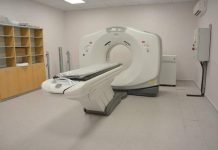what are the possible complications of epidural analgesia during labor?
Complications of Labor Epidural You Should Know
Introduction
Labor epidural analgesia is a widely used method of pain relief during childbirth. It involves the injection of local anesthetic and opioid medications into the epidural space, which is the outermost layer surrounding the spinal cord. Although labor epidural is generally considered safe and effective, there are potential complications associated with the procedure that both patients and healthcare providers should be aware of.
What are the possible Complications of epidural analgesia during labor:
Hypotension:
One of the most common complications of labor epidural is hypotension, which is a sudden decrease in blood pressure. This can occur because the medication used in epidural anesthesia can block the sympathetic nervous system, which controls blood pressure. Hypotension can cause dizziness, nausea, and even fainting in some cases. To prevent this, anesthesiologists will typically give the patient intravenous fluids and closely monitor their blood pressure throughout the procedure.

Respiratory Depression:
Another possible complication of labor epidural is respiratory depression, which is a decrease in breathing rate and depth. This can occur when the opioid medication used in epidural anesthesia reaches high levels in the bloodstream. Respiratory depression can be dangerous and even life-threatening, especially in patients with underlying respiratory problems. To prevent this, anesthesiologists will carefully monitor the patient’s respiratory rate and provide supportive care as needed.
Prolonged Labor:
In some cases, labor epidural can slow down or prolong labor, which can lead to other complications such as the need for a cesarean delivery. This is because the medication used in epidural anesthesia can affect the mother’s ability to push effectively during labor. To minimize this risk, anesthesiologists will typically use a low dose of medication and will adjust the dosage as needed based on the mother’s pain level and labor progress.
Headache:
A headache is a common side effect of labor epidural, and it occurs in up to 1% of cases. This headache is usually due to the accidental puncture of the dura mater, which is a thin membrane that covers the spinal cord. If this occurs, cerebrospinal fluid (CSF) can leak out and cause a headache that typically worsens when the patient sits or stands up. To treat this, anesthesiologists can perform a blood patch, which involves injecting the patient’s own blood into the epidural space to seal the puncture site.
Nerve Damage:
Although rare, nerve damage is a potential complication of labor epidural. This can occur if the epidural needle or catheter damages a nerve in the spine. Symptoms of nerve damage can include numbness, tingling, and weakness in the affected area. To prevent this, anesthesiologists use a small-gauge needle and carefully guide the needle and catheter using imaging techniques such as ultrasound or fluoroscopy.
Conclusion:
Labor epidural is a safe and effective method of pain relief during childbirth, but as with any medical procedure, there are potential complications associated with it.
Patients and healthcare providers should be aware of the potential risks and benefits of labor epidural and discuss them before deciding to use this method of pain relief. By doing so, patients can make informed decisions and healthcare providers can provide the best possible care.
Haroon Chaudhry
























